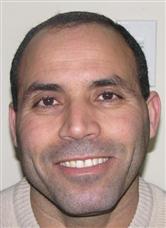 Solo terrorists pose new threat: report
Intelligence cites 'lone wolves' as emerging trend
Solo terrorists pose new threat: report
Intelligence cites 'lone wolves' as emerging trend
A newly declassified Canadian intelligence report is warning about the emerging threat posed by "lone-wolf " Islamist terrorists who operate completely on their own.
Terrorists inspired by al-Qaeda have, in the past, tended to work in cells, but the report says they are beginning to use the solo strategy once associated with the militant far right.
"Lone wolves motivated by Islamist extremism are a recent development," it says. "Islamist terrorist strategists are now advocating that Muslims take action at a grassroots level, without waiting for instructions."It adds that lone-wolf Islamist extremist attacks and conspiracies "seem to be on the increase" and that "several such cases have been recorded since 9/11," although the list of examples appears to have been censored from the report.
The report, "Lone-Wolf Attacks: A Developing Islamist Extremist Strategy?" was written by the Canadian government's Integrated Threat Assessment Centre.
A copy of the intelligence assessment was obtained by the National Post under the Access to Information Act, but parts of it were cut out by government officials.
A lone wolf is inspired by a terrorist cause but takes action independently. Lone wolves are difficult to identify because they do not join terrorist groups or associate with other known extremists.
The phenomenon is being linked to the Internet. "The Internet has become an important catalyst for homegrown extremists, including lone wolves, by providing ideological motivation, encouragement, justification, target information and instruction on techniques, all in an anonymous environment," the report says.
The change in strategy may be a result of successful counterterrorism efforts: As more plots are being detected by security agencies, terrorists are being forced to operate in greater isolation.
Terrorism expert Bruce Hoffman said he believes the Canadian assessment is correct and that the shift is part of a larger strategy to distract and exhaust Western counterterrorism agencies.
"I think it's right but I think this is yet another example of the strategic sophistication of our adversaries in that by encouraging lone wolves, I think they're trying to suck the resources from our security and intelligence services and police departments," he said.
"In other words, if there's a homegrown threat, which is one thing, now there's a lone-wolf threat. And I think they're both legitimate. I think part of al-Qaeda's strategy, the jihadi strategy, is to get everyone so consumed with these grass-roots threats that it gives greater scope to the real professionals to operate."
The report comes as U. S. terrorism scholars are debating whether the al-Qaeda organization has re-emerged as the primary threat or whether the more pressing concern comes from radicalized individuals and groups acting on their own.
Canadian intelligence expert Wesley Wark said both views are right. "That is, we have witnessed both a surprising resurgence of al-Qaeda as a centrally organized and dangerous terrorist organization and the evolution, over several years, of the phenomenon of homegrown terrorism. They exist in symbiosis. Each depends for its strength on the other."
He said lone wolves pose a relatively low threat since they would have a hard time orchestrating an attack that would cause mass casualties and create the mass spectacle that terrorists seek.
"Lone wolves are unlikely to be able to achieve either given the complexity of planning and materials required," the University of Toronto professor said.
"So far, there have been no Islamist-inspired lone-wolf attacks in Canada," the report says.
© 2008 Canwest Interactive, a division of Canwest Publishing Inc. All rights reserved.









